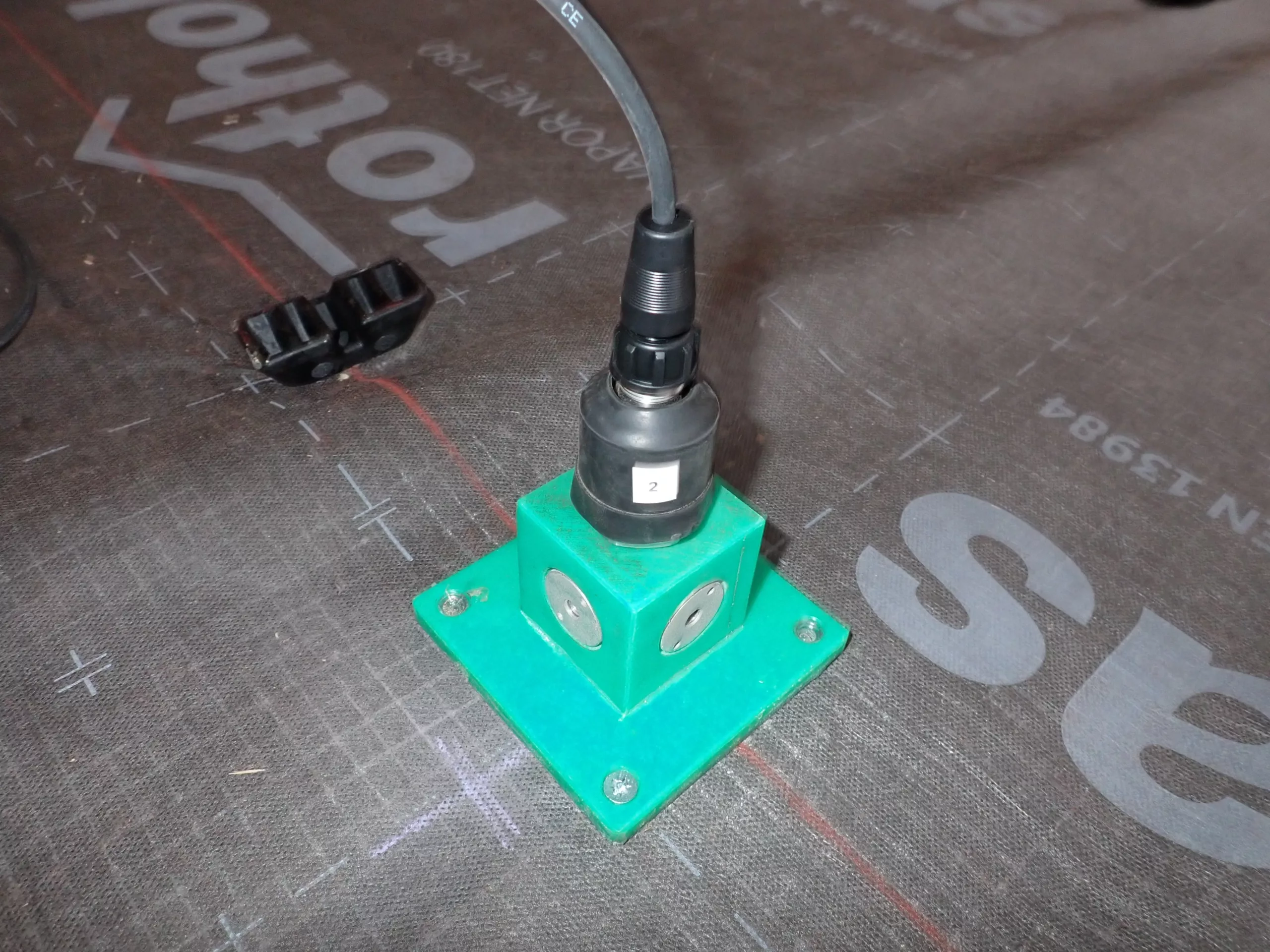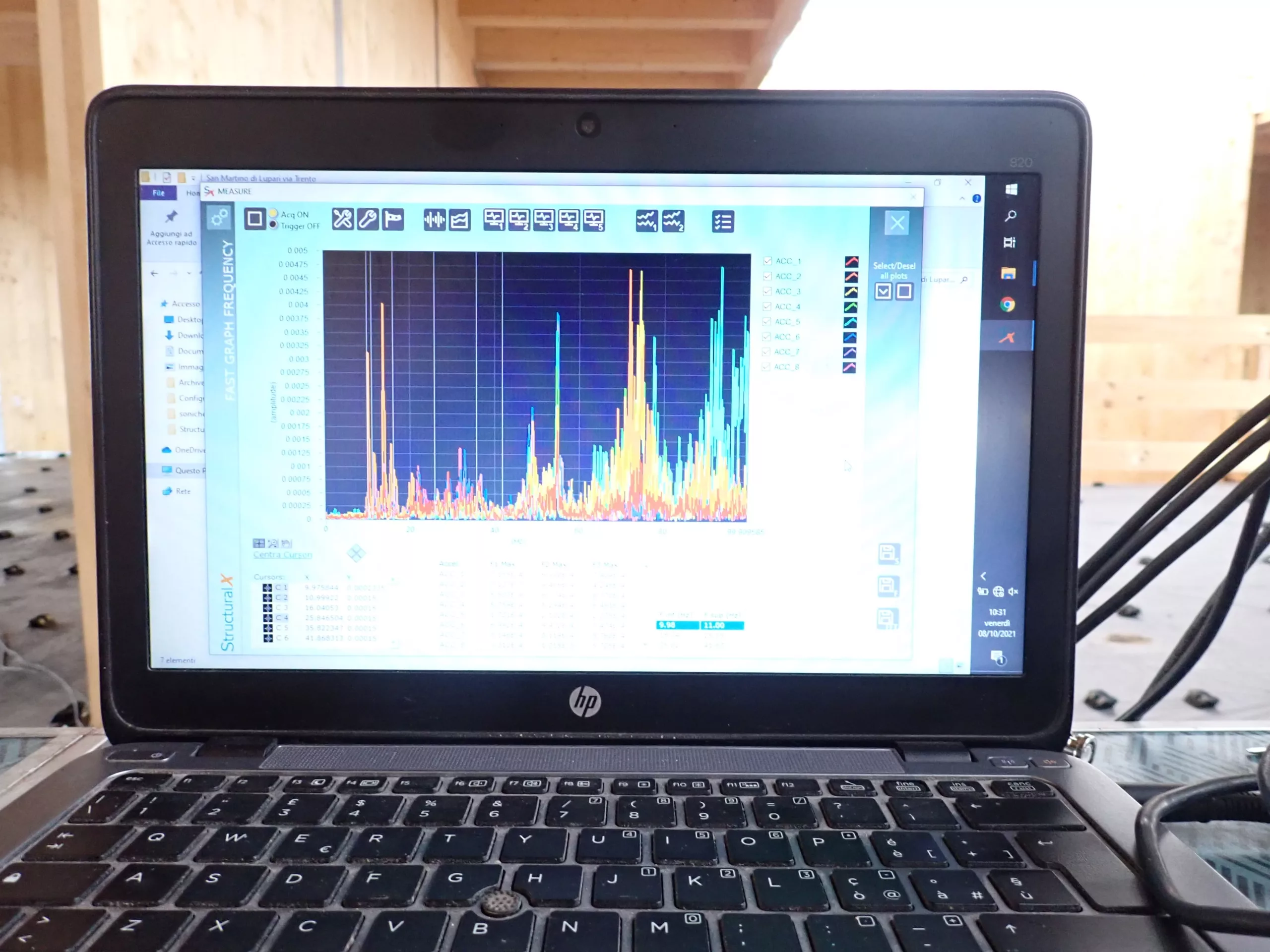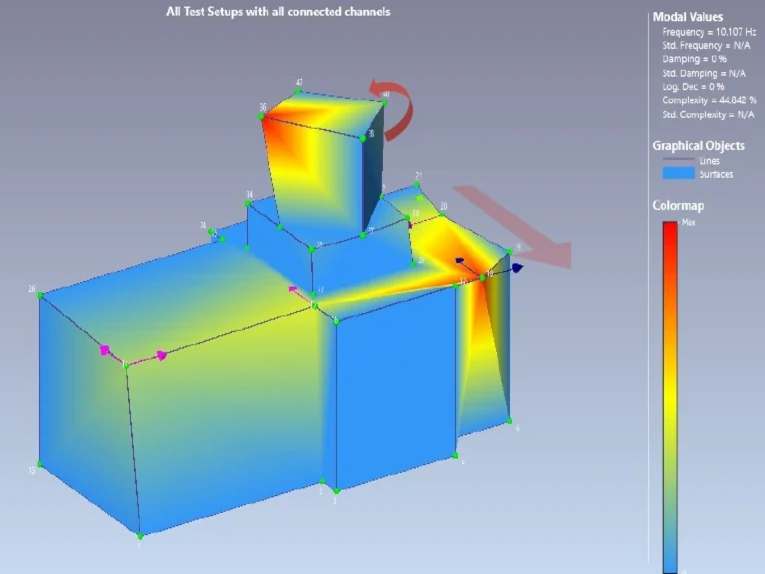


Operational Modal Analysis
Dynamic identification tests – Operational Modal Analysis (OMA) are aimed at the characterization of the dynamic modal response of the structure under ambient or operational conditions. Results obtained are directly related to physical and structural parameters of building subjected to investigation, as the geometry (mass distribution), the stiffness and the boundary conditions. Models derived from structural identification are used to assess the actual behaviour of the building and act as a useful predictive tool against exceptional actions such as earthquakes. Modal identification techniques operate in frequency or time domain. The first procedures consist in the transposition to the frequency domain of the recorded signals by employing adequate mathematics (FFT, FDD, …), the second in the parametric fitting of a mathematical model. Dynamic tests consist in the measurement of the vibrations in relevant positions of the analysed structure under environmental or operational effects (wind, traffic, …), with the assumption of a sufficiently white noise exciting the structure, with output only data analysis. In case of purposely induced vibrations under known excitation (vibrodyne, instrumented hammer, drop weight, …), the test mode is named FVA for Forced Vibrations Analysis. From experimental modal parameters it is possible to proceed with the calibration of FEM models.
Reference standards: UNI 9614:2017; UNI 9916:2014; UNI 11568:2015.
